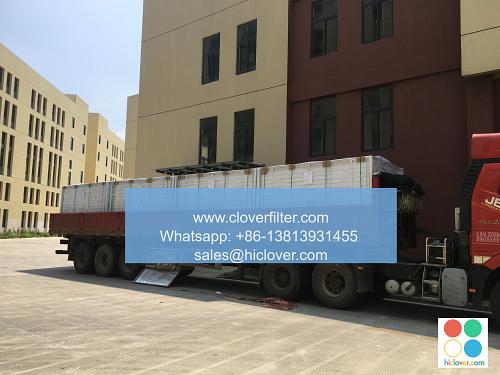The Benefits of Automatic Roll Air Filters in IBM’s Chip Manufacturing Clean Zones

The semiconductor industry, particularly companies like IBM, relies heavily on maintaining ultra-clean environments in their chip manufacturing facilities. These clean zones are crucial for producing high-quality microchips, as even the smallest particle of dust can contaminate the manufacturing process and lead to defective products. One of the key technologies used to achieve and maintain these clean conditions is the Automatic Roll Air Filter (ARAF). In this article, we will explore the benefits of using ARAF systems in IBM’s chip manufacturing clean zones, highlighting their application areas, efficiency improvements, and cost savings.
What are Automatic Roll Air Filters?
Automatic Roll Air Filters are advanced air filtration systems designed to provide continuous, high-efficiency air cleaning in sensitive environments. Unlike traditional filter systems that require manual replacement, ARAF systems automatically roll out a new filter media as the old one becomes saturated, ensuring consistent air quality without interruption. This feature is particularly beneficial in 24/7 operation environments like IBM’s chip manufacturing facilities, where downtime can result in significant financial losses.
Benefits in Chip Manufacturing Clean Zones
The inclusion of ARAF systems in IBM’s chip manufacturing process offers several significant benefits:
– Enhanced Cleanliness: By continuously filtering the air to remove even the smallest particles, ARAF systems help maintain the ultra-clean conditions necessary for chip manufacturing. This reduces contamination risks and improves the overall quality of the microchips produced.
– Increased Efficiency: The automated nature of these filters means that manual labor is minimized, and the risk of human error in filter maintenance is eliminated. This leads to higher productivity and more consistent manufacturing processes.
– Cost-Effective: While the initial investment in ARAF systems might be higher than traditional filtration methods, they offer long-term cost savings. The automatic roll feature extends the time between filter replacements, reducing waste and the overall cost of filter media over time.
Application Areas within IBM’s Facilities
The application of ARAF systems is not limited to the manufacturing floor. These filters can be integrated into various areas within IBM’s facilities to ensure a clean and healthy environment:
– Cleanrooms: The most critical areas where microchips are manufactured. ARAF systems are essential for maintaining the required cleanliness levels.
– Research and Development Labs: Areas where new technologies and manufacturing processes are developed. Clean air is crucial for the accuracy and reliability of experiments and tests.
– Server Rooms and Data Centers: While not directly involved in chip manufacturing, these areas are critical for the operational IT infrastructure of IBM. Clean air helps prevent overheating and extends the lifespan of sensitive electronic equipment.
Conclusion
The use of Automatic Roll Air Filters in IBM’s chip manufacturing clean zones represents a significant advancement in maintaining the ultra-clean environments required for high-quality microchip production. By enhancing cleanliness, improving efficiency, and offering cost savings, ARAF systems play a critical role in the success of IBM’s manufacturing operations. As the semiconductor industry continues to evolve, the importance of innovative air filtration solutions like ARAF will only continue to grow, supporting the development of more complex and sensitive technologies.

